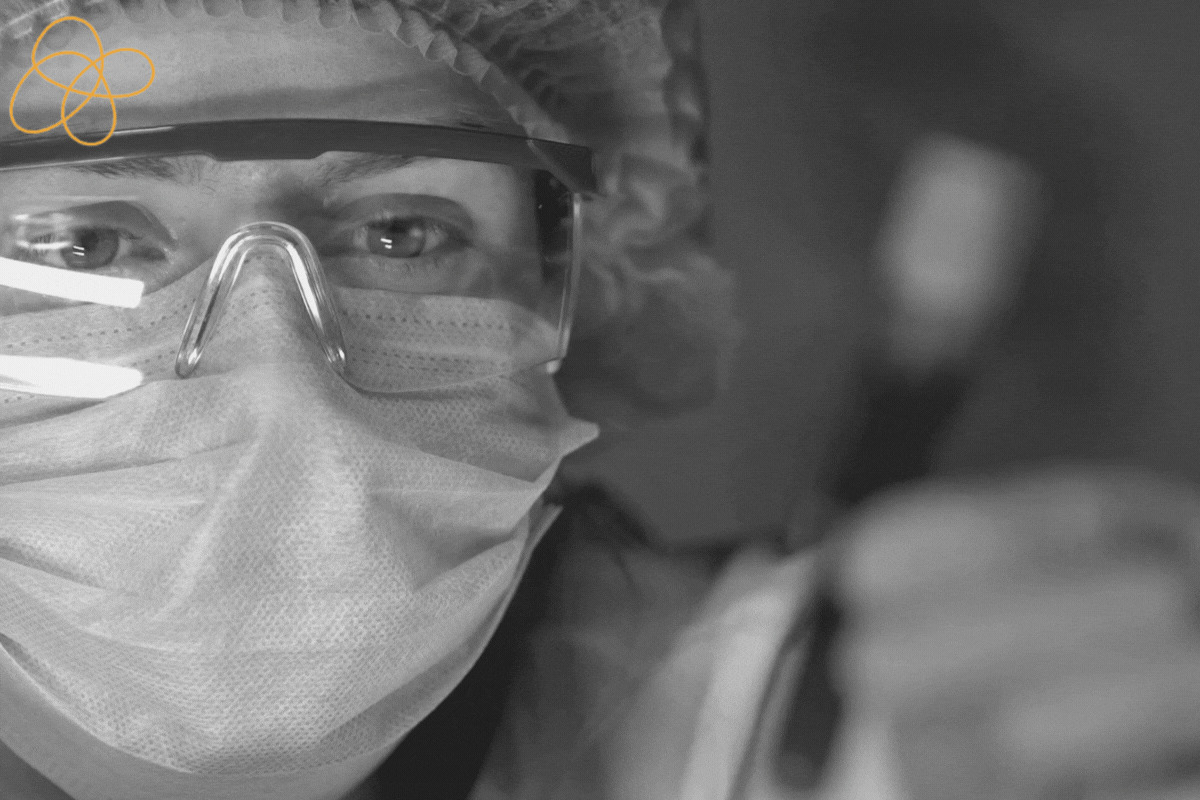Cracking the Code of Analytical Method Development and Validation in Biosimilars: Unmasking the Hidden Challenges
In the rapidly evolving world of biosimilars, the path to success is strewn with unseen hurdles and complex challenges. The pressure to reach the market swiftly, coupled with the need to ensure safety and efficacy, makes the journey incredibly arduous. One critical battlefield where many promising biosimilars have met their Waterloo is the development and validation of analytical methods.
Analytical method development and validation is not just another box to check off on your biosimilar development checklist; it’s the bedrock upon which your entire biosimilar development process rests. Get this right, and you set a solid foundation for a successful journey to the market. Get it wrong, and your promising biosimilar could end up as another cautionary tale of failed potential.
In this blog post, we delve into the labyrinth of analytical method development and validation for biosimilars, demystifying its complexities, and uncovering the traps that have ensnared even the most experienced developers. Strap in as we embark on this exciting journey of scientific discovery and strategic insight. Whether you’re a veteran in the biosimilars space or a newcomer looking to make your mark, this exploration will arm you with the knowledge and strategies needed to navigate the challenging terrain of biosimilar development successfully. The path may be arduous, but the rewards are truly monumental. Let’s embark on this journey together!
Understanding Biosimilars and the Need for Analytical Methods
Biosimilars are biological products that are highly similar to an FDA-approved biologic, known as the reference product. They have no clinically meaningful differences in terms of safety, purity, and potency. The high complexity and heterogeneity of these molecules, however, require rigorous analytical testing to prove bio similarity.
Analytical methods for biosimilars must be capable of evaluating critical quality attributes (CQAs), which are properties or characteristics that should be within an appropriate limit, range, or distribution to ensure the desired product quality. Examples of CQAs include purity, potency, and impurities.
Developing Analytical Methods
Analytical method development for biosimilars is an iterative process that begins with defining the CQAs, followed by method selection, optimization, and verification. Here is a closer look at each stage:
- Defining CQAs: The first step is to identify and define the CQAs. This is achieved by understanding the structure, function, and production process of the reference product.
- Method Selection: Based on the defined CQAs, appropriate analytical methods are selected. These may include spectroscopic methods, chromatographic methods, or bioassays, among others.
- Optimization: Next, the methods are optimized to achieve the best possible results. Optimization includes adjusting variables to ensure accuracy, precision, and robustness.
- Verification: Finally, the methods are verified to ensure they are suitable for their intended purpose. Verification includes checking for precision, accuracy, and specificity.
Validating Analytical Methods
Method validation is a mandatory step to demonstrate that the analytical methods are suitable for their intended purpose. The validation should be able to show that the method is reliable, reproducible, and consistent. Key parameters for validation include:
- Accuracy: This determines the closeness of the test results obtained by the analytical method to the true value.
- Precision: Precision assesses the closeness of multiple measurements using the same sample. It is usually expressed as the standard deviation or relative standard deviation.
- Specificity: This parameter assesses whether the analytical method accurately measures the analyte in the presence of other components such as impurities, degradants, or matrix.
- Linearity: Linearity demonstrates that the method provides results that are directly proportional to the concentration of the analyte in samples.
- Robustness: Robustness measures the capacity of the method to remain unaffected by small variations in method parameters and provides an indication of its reliability during normal use.
Developing and validating analytical methods for biosimilars is a complex but essential process. It is the cornerstone for demonstrating bio similarity and ensuring that the biosimilar product meets the required quality, efficacy, and safety standards.
However, due to the complex nature of biosimilars, this process can present many challenges. By employing a systematic, step-by-step approach, and understanding the key parameters to focus on during validation, these challenges can be overcome, leading to the successful development and approval of biosimilars.
For a deeper dive into these processes or for assistance in developing and validating analytical methods for your biosimilar product, see a few case studies below. Consider reaching out to a regulatory and CMC strategy consulting group like Enkrisi. With our expertise in regulatory strategy and submission services, we can guide you through the labyrinth of biosimilar development to achieve your objectives.
Case Study 1: Inadequate Method Validation – The Eprex Case
Background
In the late 1990s and early 2000s, a series of unexpected adverse events were associated with Eprex, a biosimilar for the treatment of anemia in chronic renal failure patients. The adverse events, known as Pure Red Cell Aplasia (PRCA), were directly linked to changes in the formulation of Eprex.
Analytical Issue
To eliminate human serum albumin (HSA) from the Eprex formulation, the company decided to replace it with polysorbate 80. Unfortunately, the change led to an unexpected aggregation of the protein. The existing analytical methods were unable to detect these aggregates because they were not developed or validated for this purpose.
Outcome
The lack of appropriate analytical methods to detect and characterize the protein aggregates resulted in a significant safety risk to patients, with many developing anti-EPO antibodies leading to PRCA. This case highlighted the critical importance of having robust analytical methods that can adequately assess the potential impact of changes in biosimilar product development.
Case Study 2: Difficulty in Comparing Quality Attributes – The Teva’s Neutroval Case
Background
In 2016, Teva withdrew its biosimilar application for Neutroval (a biosimilar to Amgen’s Neupogen) from the European Medicines Agency (EMA).
Analytical Issue
Teva faced challenges in demonstrating bio similarity due to the difficulty in comparing certain quality attributes of Neutroval with the reference product, Neupogen. The analytical methods used were not able to fully align the quality attributes of the biosimilar with the reference product.
Outcome
Due to the difficulty in demonstrating comparability, Teva decided to withdraw its application. This case underscores the importance of robust analytical methods in assessing and aligning quality attributes of a biosimilar with its reference product.
Case Study 3: Lack of Sensitive Analytical Methods – The Sandoz’s Zarzio Case
Background
Sandoz’s Zarzio is a biosimilar to Amgen’s Neupogen and was the first biosimilar approved in Europe in 2008.
Analytical Issue
One of the hurdles that Sandoz faced was the lack of sensitive analytical methods to compare the glycosylation patterns of Zarzio and Neupogen. Glycosylation is a critical quality attribute for many biologics and can affect a drug’s efficacy and immunogenicity.
Outcome
To overcome this issue, Sandoz had to develop new, more sensitive analytical methods to accurately compare the glycosylation patterns. The development of these new methods was challenging and time-consuming, but ultimately crucial for the successful approval of Zarzio. This case emphasizes the necessity of sensitive and precise analytical methods in biosimilar development.
Regulatory Guidance
Regulatory agencies worldwide have issued several guidance’s to assist sponsors in developing and validating analytical methods for biosimilars. Here are a few key documents from the U.S. Food and Drug Administration (FDA), the European Medicines Agency (EMA), and the International Council for Harmonisation (ICH):
U.S. Food and Drug Administration (FDA)
- Scientific Considerations in Demonstrating Bio similarity to a Reference Product (FDA): This guidance outlines the FDA’s recommendations for demonstrating bio similarity, including the use of analytical studies to assess the similarity between a proposed product and a reference product.
- Bioanalytical Method Validation Guidance for Industry (FDA): This guidance provides recommendations on the validation of bioanalytical methods used in human clinical pharmacology, bioavailability (BA), and bioequivalence (BE) studies that require pharmacokinetic (PK) or biomarker concentration evaluation.
- Quality Considerations in Demonstrating Bio similarity of a Therapeutic Protein Product to a Reference Product (FDA): This guidance provides an overview of analytical factors to consider when assessing bio similarity between a proposed therapeutic protein product and a reference product.
European Medicines Agency (EMA)
- Guideline on Similar Biological Medicinal Products (EMA): This document outlines the general principles for proving similarity between a biosimilar and a reference product. It covers quality aspects, including analytical method development and validation.
- Guideline on Similar Biological Medicinal Products Containing Biotechnology-Derived Proteins as Active Substance: Quality Issues (EMA): This guideline provides detailed guidance on the quality-related data required to demonstrate similarity between a biosimilar and the reference product.
International Council for Harmonisation (ICH)
- ICH Q2(R1) Validation of Analytical Procedures: Text and Methodology: This document provides guidance on the validation of analytical procedures used in the testing of drug substances and drug products. It includes discussions on accuracy, precision, specificity, detection limit, quantification limit, linearity, range, and robustness.
These guidance’s provide a comprehensive overview of the expectations for developing and validating analytical methods for biosimilars. It is crucial to familiarize oneself with these documents to ensure the analytical methods developed align with regulatory expectations. However, given the complexity of biosimilars, it is often beneficial to seek expert advice from a regulatory consulting group to navigate these requirements successfully.
Conclusion
The development and validation of analytical methods stand as a crucial pillar in the biosimilar development process. It’s akin to navigating an intricate labyrinth; the path is complex and filled with challenges, but reaching the end successfully brings immense rewards. As evident from the case studies discussed, any misstep can lead to significant setbacks, impacting not only the product’s timeline and budget, but also its potential to provide a safe, effective, and affordable therapeutic option for patients.
Regulatory guidance’s from agencies like the FDA, EMA, and ICH offer a roadmap for this journey. They provide insights into the expectations and standards for method development and validation, helping to steer the process in the right direction. However, these guidelines can be as intricate as the process they aim to guide, requiring expert interpretation and implementation.
In this rapidly evolving biosimilar landscape, staying ahead means not just keeping up with the current best practices, but also anticipating and preparing for future developments. It requires a deep understanding of science, a strategic approach to development, and a commitment to excellence in execution.
The journey may be complex, but armed with the right knowledge, strategies, and partners, success is within reach. At Enkrisi, we are committed to guiding our clients through this labyrinth, providing expert consulting services to navigate the complexities of biosimilar development. Together, we can unlock the potential of biosimilars, bringing high-quality, affordable therapeutic options to patients worldwide.
Remember, the journey of a thousand miles begins with a single step, and in the world of biosimilars, that first step is often developing and validating robust analytical methods. Let’s embark on this journey together.
Unleash the Potential of Biosimilars with Enkrisi
Navigating the world of biosimilars can feel like charting a course through an intricate maze. At every turn, new challenges emerge – from proving bio similarity to meeting rigorous regulatory standards. But within this complex landscape lies immense potential. Biosimilars offer the promise of delivering life-changing therapies to patients worldwide, at a fraction of the cost.
At Enkrisi, we believe in turning this potential into reality.
As a leading consulting group, we specialize in helping organizations navigate the complexities of drug development and regulatory compliance. We leverage the power of augmented Intelligence (A.I.) and data analytics to drive success in the biosimilar market.
Whether you’re developing small molecules, biologics, or combination products, our comprehensive drug development model is designed to guide you every step of the way. We offer expert guidance on a wide range of submission types, including Orphan Drugs Designation, Fast Track, Break-through Therapy, Accelerated Approval, ANDA, and 505(b)(2).
One area where we truly shine is in the development and validation of analytical methods for biosimilars. With our deep scientific knowledge and strategic approach, we help you navigate this crucial process, ensuring your analytical methods are robust, precise, and aligned with regulatory expectations.
But our support doesn’t stop there. We also offer FDA meeting preparation and engagement consulting services, representing you in interactions with the FDA and providing ‘FDA-style’ reviews of submissions. Plus, our CMC development consulting services provide comprehensive support for sponsors, covering formulation, process, and analytical development, validation, regulatory and quality assurance compliance, stability data assessment, gap assessments, and risk-based strategies for product development.
In the challenging world of biosimilars, you need a partner you can trust. A partner who understands the complexities of the landscape and can guide you towards success. That partner is Enkrisi.
Ready to unlock the potential of biosimilars? Reach out to Enkrisi today and let’s embark on this journey together.






